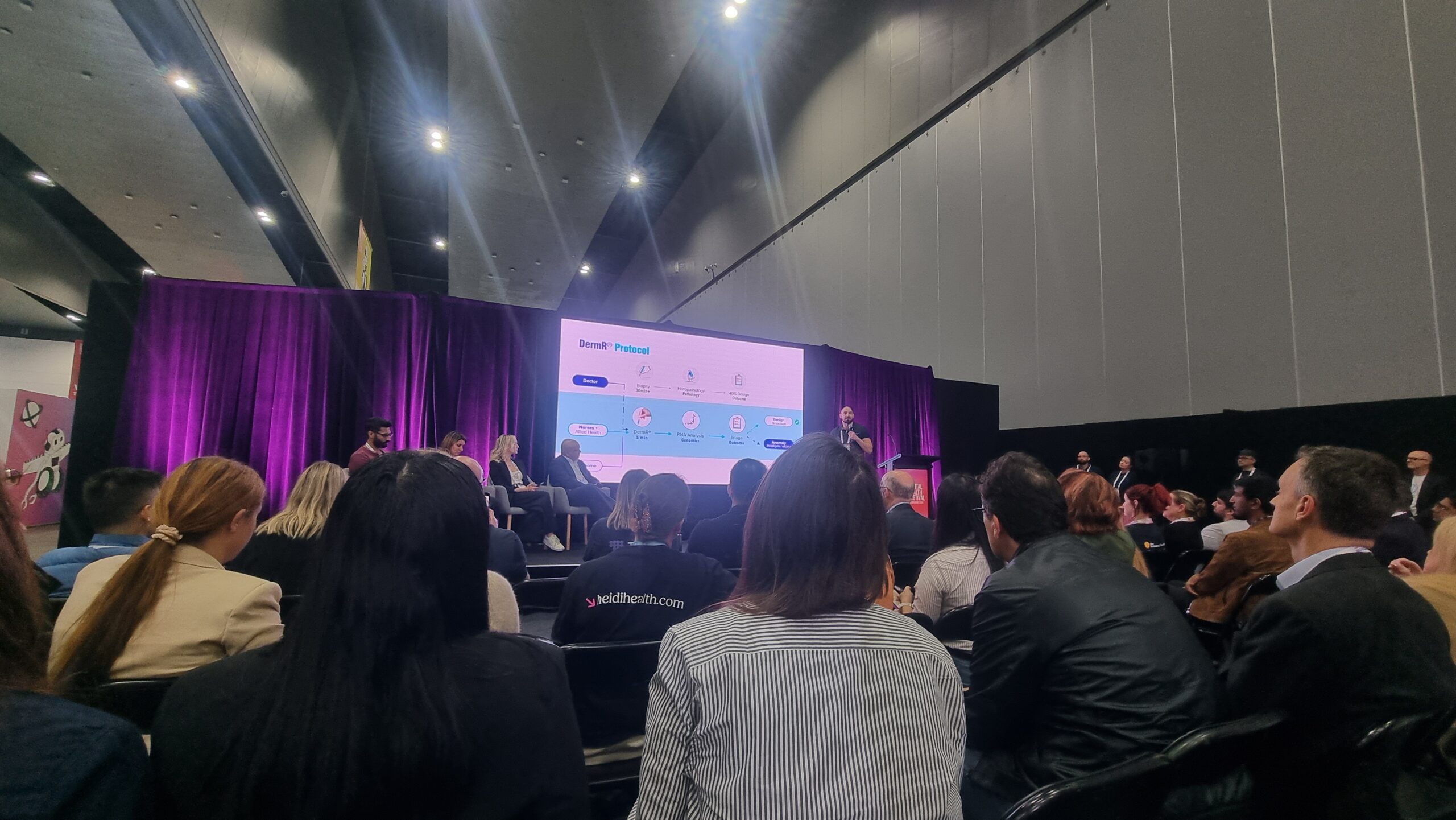The Digital Health Festival took place in Melbourne on May 7-8th, and it clearly exposed that “digital health” is now the mainstream and has become integral to every aspect of the healthcare system.
The first thing that was apparent was the sheer scale of the event. While a decade ago, digital health might have been a stream of interest, it is now the main event and streams were made up of everything from aged care to AI, primary care to pharmaceuticals. There was even a stream called “FUN!” (all caps, which is how you knew it was serious).
The line to check in was the full length of the Melbourne Convention and Exhibition Centre. While it moved quickly, it showed that thousands of people were there to absorb, to learn, to network and hopefully to advance the overall digital health sector.
Multiple stages running concurrently, plus a large floor of companies made it impossible to attend every session, but the following themes stood out:
Devices Stand Out Amongst a Sea of Similarities
A cynical view expressed by some during the event was the same-sameness of apps. From the logo, branding, and colour scheme to the same set of words in a slightly different order, there seems to be a saturation point of digital health apps. From a market research perspective, what was clear was there was a lack of customer understanding particularly from the view of how [whichever product] solved a problem in the context of the wider healthcare system. There was little clarity on how the product fit into the patient journey — how it reduced/removed burdens or addressed unmet needs — as one of many technologies a patient will use or encounter.
Device companies appear to have a better grasp of this, and the conversations steer towards data interoperability with incumbent systems, augmenting existing workflows and the importance of integrations. While there are definitely some that take a black box approach, the articulation of how a solution fits into the ecosystem goes a long way to signalling how successful and sustainable it will be in the future.
Winter is Coming for Companies That Don’t Understand Their Regulatory Obligations and Reimbursement Options
At the end of last year, the Federal Government announced its 10-year digital health roadmap. Changes to the regulation classifications of digital health products are flagged as a major change (“may include specific regulatory requirements for digital health”). Despite this, it was apparent how few organisations either didn’t understand what this would mean or did know and were choosing to skirt their responsibilities in the short-to-mid-term.
In this instance, ignorance is not bliss – it will lead to very expensive changes that may bleed some companies dry. Companies that aren’t prepared now will shut down in the future because the holes they’ll have to dig themselves out of will require diverting resources for long periods of time, taking away from trying to advance the customer/patient value creation.
Early-and-mid-stage companies, particularly those with limited budgets, should consider the importance of investment in developing a strong grasp of the regulatory and potential reimbursement requirements and opportunities. This forward thinking means that business plans and investment documents have a clearer roadmap, including use of funds and why it’s critical to get right. Aside from a more honest and objective view of the road ahead, strong documentation of regs and reimbursement de-risks investments.
Trends May Come and Go, but Clinical Workflows Are Here to Stay.
If there was ever a Maslow’s hierarchy of content, clinical workflows would fall somewhere around physiological or safety and security.
Companies, speakers, and attendees that work as or with healthcare professionals almost exclusively talked about clinical workflows. Whether they were trying to improve them, remove them, reduce them, govern them, or use AI/machine learning to do any or all the above, clinical workflows have been the elephant in the room for decades, and without any level of trust or comfort in the solution architecture, it will be impossible to reach self-actualisation.
The scale of the clinical workflow problem was reinforced by the recent research paper from the Productivity Commission, highlighting that “better use of electronic medical record systems could save up to $5.8 billion per year in hospital costs, comprised of $5.4 billion per year by reducing the time patients spend in the hospital and up to $355 million through fewer duplicated tests.”
Any healthcare organisation (big or small) can leverage service design to analyse and improve its clinical workflows. There seems to be no one-size-fits-all technology solution (nor, arguably, should there be), but rather than diving headfirst into trialling multiple technologies in the hopes of finding the holy grail, it is strategically smarter to design a service from the patient’s perspective, then align the people, process, and technology to enable that service to happen.
Despite the Challenges, There Is a Sense of Excitement about the Future.
The underlying feeling throughout the two days was excitement. Whether it was a panel about AI supporting clinical decision making (with at least a hundred people in standing room only), how digital health is driving value-based care, or the importance of and impact of investment in ‘FemTech’, there is excitement about the impacts of digital in the transformation of every facet of the healthcare system.
While frustrations and roadblocks abound, there are at least a few thousand people in Melbourne committed to driving change on a global level. And it’s hard not to be excited about that.
Are you navigating the complexities of the digital health landscape? Connect with us to gain deeper insights into your customer and patient research, and to refine your regulatory and reimbursement strategies. We’re committed to helping you stay ahead in this rapidly evolving field.
Reach out today to explore how our expertise can enhance your impact and ensure its success in the healthcare market. Let’s innovate together and transform patient care for the better.
For more information, please contact us at insights@commercialeyes.com.au

